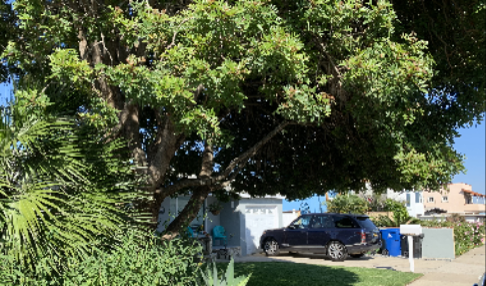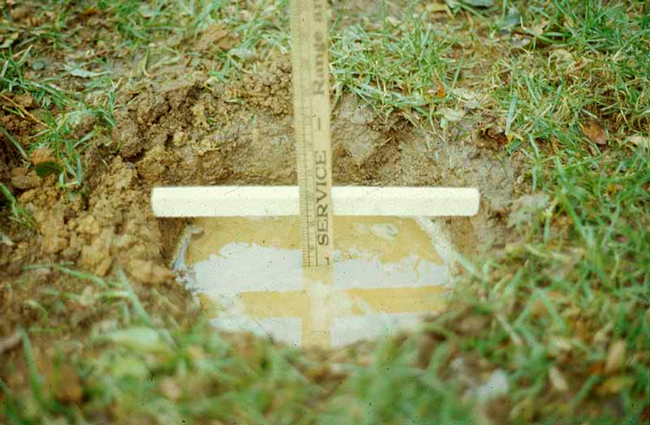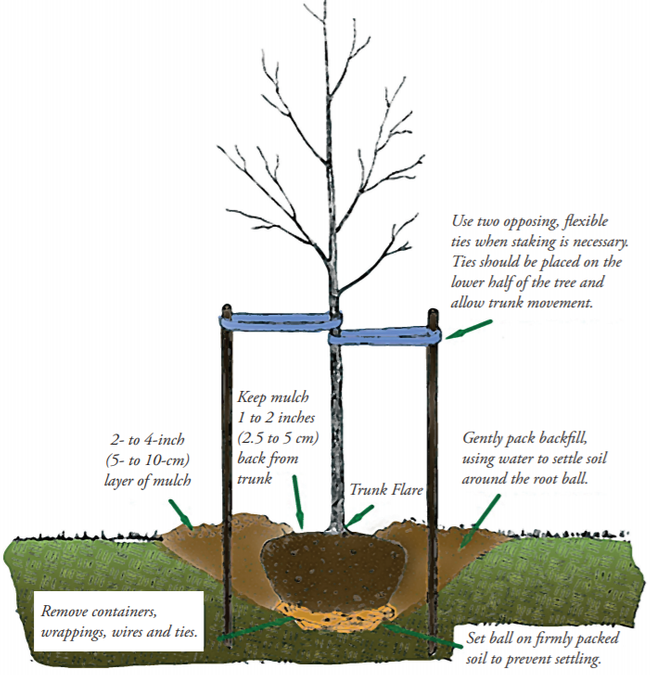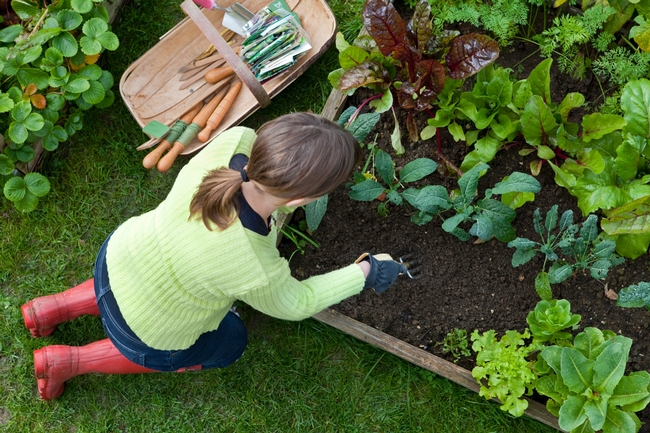
Posts Tagged: planting
Plant a Tree. Leave a Legacy!
Do you have Spring Fever? If you have adequate space, why not leave a legacy to your children's children by planting a tree? When the right species is planted in the right location with the right care, landscape trees can be enjoyed for 100 years or more. Landscape trees cool urban heat islands, absorb carbon dioxide, filter toxic chemicals from soil preventing them from polluting our waterways, reduce soil and water erosion, reduce internal energy needs and related costs, provide habitat, and beautify neighborhoods.
Spring is a much better times to plant a container landscape tree in California than is summer. Trees incur far less stress if they've been in the ground several weeks rather than having to immediately adapt to high summer temperatures. Cooler weather allows plants to establish roots in their new ‘home' before the harshness of summer sets in. (Deciduous bare-root fruit trees, on the other hand, should be planted during the winter when they are dormant.) Choose recommended species for your climate and micro-climate.
Choose trees based on your Sunset climate zone (more precise than USDA zones for California since they include impacts of high temperatures as well as low temperatures) and your microclimate (shade, soil conditions, space, etc.). Four of my favorite search engines that allow one to search by multiple criteria (size, water needs, flower color, ecosystem functions, pest susceptibility, etc.) are: Inland Valley Garden Planner: https://inlandvalleygardenplanner.org/; Cal Poly, Pomona: https://selectree.calpoly.edu;California Native Plant Society: http://www.cnps.org/cnps/grownative/lists.php; and WUCOLS IV (Water Use Classification of Landscape Species): http://ucanr.edu/sites/WUCOLS
Avoid circled, girdled roots. Remember to inspect the root system of container trees. Avoid purchasing specimens with severely circled and girdled roots. Root pruning will not solve the problem and the resulting tree is much more prone to failure later. This occurs because the upper portion of the tree continues to grow and expand while the root system lacks the breadth and architectural strength to support the tree. Many times a tree will look fine for several years and - seemingly - very suddenly topple in winds that otherwise it could sustain with a more adequate root system. Only when the tree falls does the owner actually notice firsthand that the root system is the same size it was when the tree was planted years before!
Check drainage before you plant. Dig a hole where you are planning on planting the tree, fill it with water, and make sure it completely drains within 24-hours. If it doesn't drain, don't plant a tree there. In some cases, trees are carefully selected based on species and location only to perish ten or more years later due to poor drainage and water-logged soil. Trees often die in these situations due to a lack of aeration setting them up for disease-causing fungal pathogens.
Planting the tree. Dig a hole at least 2-1/2 times the width of the container (in clay or compacted soils make the hole at least 4-5 times wider) up to two inches shallower than the depth of the tree in the container to compensate for settling. Use a shovel or trowel to roughen the soil on the sides of the hole to encourage root growth into the native soil. Remove the tree from the container along with any loose soil that covers the lower part of the trunk. Carefully place the tree in the planting hole, keeping the trunk flare (the area where the trunk widens and connects with the roots) 1-2 inches above the existing grade. Gently fill the hole with the same soil that was removed. Do not add soil amendments or compost, another common cause of circled and kinked roots. Irrigate the tree immediately after planting through the entire root system and slightly deeper. Keep in mind that soils with appreciable clay content absorb water more slowly than sandier soils and need to be watered longer but less often. Water newly planted container trees often through their establishment period, even if they are drought tolerant species. Recently transplanted trees have a small volume of roots that dry out very quickly. Water newly planted trees regularly through the first season. Trees in sandy soils require more frequent watering than do trees in heavier soils. (After trees are fully established, irrigation frequency should be reduced but more water should be added during each irrigation.)
Avoid staking trees unless necessary. Stake trees only if they were staked at the nursery and/or if they are planted in a wind-prone area. Remember to loosen ties on nursery stock before they girdle the trunk. Gently secure any tree requiring staking with two opposing flexible ties on the lower half of the tree, allowing the tree to gently blow in the wind to encourage lower trunk strength. Avoids taking trees tightly, restricting flex. As the tree matures, remember to loosen ties and aim for removing stakes entirely if the tree is self-supporting.
Pruning. Avoid heavy pruning at the time of planting. Remove only broken branches, crossed branches and suckers at the base of the tree.
Fertilizing. Most trees have received adequate nutrition in the nursery and do not need fertilizer at the time of planting.
Mulching. Apply a 2-4 inch layer of mulch three or more inches away from the tree trunk. Organic mulches such as woodchips and compost should be applied and maintained at a depth of 3-4 inches to prevent weed seeds from sprouting. Inorganic mulches (gravel, pebbles, etc.) should be maintained at 2-3 inches. In fire-prone areas, organic mulches near the urban/forest interface should be avoided. Remember to irrigate below the mulch.
For more information on tree planting and care and all other home gardening and landscape topics, contact the UCCE San Bernardino County Master Gardener Helpline at mgsanbern@ucanr.edu
No need to amend soil when planting new trees or perennials
Gardeners who follow conventional wisdom and nursery recommendations to mix organic amendments into the soil when planting new trees or perennials in their landscapes are making a mistake, according to UC Cooperative Extension environmental horticulture experts.
“This is one of the garden myths that I'm trying to dispel,” said Jim Downer, UCCE environmental horticulture advisor in Ventura County. “We recommend residents not amend the soil when they are planting based on outcomes we have observed in research.”
Downer and Ben Faber, UCCE advisor for water, soils and subtropical crops in Ventura County, summarized this and other information about the use of organic amendments in home landscapes in a six-page publication now available for free download from the UC Agriculture and Natural Resources catalog at https://anrcatalog.ucanr.edu/Details.aspx?itemNo=8711.
The publication says research has not shown that adding amendments to planting holes for perennial plants provides a significant advantage compared to using native backfill.
With perennial plants, the roots do not stay in the planting hole for long, so amendments would only be effective for a short time. The practice of amending the soil further harms the plant by creating an interface where the soil in the planting hole is different from the native soil.
“When that happens, roots and water don't move as well through the soil,” he said.

While there are few reasons to mix organic amendments into the soil, Downer said mulching the soil surface with uncomposted organic matter is almost always beneficial.
“If your goal is to get organic matter into the soil, we recommended topping the soil with fresh, undecomposed wood chips. It will give you microbial stimulation and suppress disease. Arthropods will slowly grab pieces of the mulch and incorporate it into the soil at a gentle rate,” he said.
The publication also provides information about various common organic amendments – such as coconut fiber, coffee grounds, horse manure, peat moss and green waste compost – with details about each product's benefits and detriments.
Garbanzo research update in California
From the UC Dry Bean blog on Jan. 30, 2020 With generous donations from seed companies and...
Ten tips for vegetable gardening during a drought
Is it possible to grow a vegetable garden when water resources are scarce and water rationing could be imposed? Water responsibly, plant carefully, and select fruit and vegetable varieties that are drought tolerant. All of these sustainable gardening practices require less water – and help ensure your family has access to a variety of nutrient rich foods.
Ten simple drought tips to reduce water use in your backyard garden
- Planting time
Plant earlier in spring and later in fall. Planting earlier in the spring season takes advantage of the warm weather and reduces exposure to high mid-summer temperatures. Planting later in the fall minimizes the use of supplemental water and takes advantage of seasonal rains to establish plants. For example, tomatoes and other nightshade crops such as peppers and eggplants, should not be planted until soil temperatures reach 55 degrees. With a warm spring this could be as early as mid-April. Remember to always use a soil thermometer for accurate soil temperature readings.
- Mulch, mulch, mulch!
A 3- to 4-inch layer of mulch can reduce watering needs by as much as 50 percent. Mulch reduces water evaporation and keeps soil temperatures down during hot summer months. Grass clippings, dried leaves, pine needles, straw and shredded bark are all examples of natural mulches which can be used to cover the soil. Hay is not recommended because it contains seeds, which yields weeds and can become a problematic option. Raised garden beds help retain water better than gardens planted in open soil.
Raised garden beds help retain water better than gardens planted in open soil. - Enclosed spaces
Gardens planted in enclosed spaces, for example a raised garden bed, retain water better than gardens planted in open soil. Plant seeds and transplants in a hexagonal "off-set" pattern rather than in straight rows. A hexagonal arrangement groups plants closer together, which provides shade from leaves, keeping soil cool and water from evaporating. - Companion planting
Companion planting is the practice of grouping crops together for mutual benefit. The Native American “three sisters” approach of planting corn, beans and squash together are the perfect example of companion planting. Tall cornstalks provide a structural support for the climbing beans, the beans return nitrogen back into the soil, and the squash spreads across the soil acting as a mulch and keeping the soil cool. - Watering times
The best time to water your garden is in the late evening and early morning hours, typically between 9 p.m. and 6 a.m. The cooler morning temperature and limited wind reduced water evaporation rates. - Water efficiently
Overhead watering with a sprinkler system is not as efficient as drip irrigation. Compared to overhead sprinklers - drip systems can reduce water usage by up to half. Install a drip irrigation system, grouping plants with similar water needs together on one drip irrigation line. Drip irrigation systems are relatively easy to install for most do-it-yourself homeowners. The UC Division of Agriculture and Natural Resources book Drip Irrigation in the Home Landscape is a great reference on the materials, design and installation of a drip system. Select the correct size garden for your family, to reduce waste from overproduction.
Select the correct size garden for your family, to reduce waste from overproduction. - Control Weeds!
Pesky weeds compete for valuable water, sunshine and soil nutrients in your garden. Remove weeds before they have an opportunity to flower or spread. Visit the UC Integrated Pest Management website for tips on controlling weeds to identify recommendations for specific weed species. - Drought Resistant Crops
Purchase varieties of fruits and vegetable that do well in hot and dry climates. Many heirloom varieties from Mediterranean regions are prized for being drought tolerant. Smaller varieties bred for containers often produce a more bountiful yield per plant than standard varieties. Avoid water hogs! Some favorite water-efficient edibles from UCCE Master Gardeners include: asparagus, chard, eggplant, mustard greens, peppers, roma tomatoes, and California native strawberries. Check with a local UCCE Master Gardener Program about which varieties are recommended for your zone. - Peak water times
Fruit and vegetables have critical periods for increased water demands. For most plants once they become established watering times and amounts can be reduced until the flowering or fruit setting process begins. An increased amount of water should be reintroduced during this time. After this initial period of fruit set water can slowly be reduced again. In some cases, reducing water can improve the flavors of your harvest (think, dry-farmed tomatoes)! - Garden size
Determine the amount of fruits and vegetables needed to feed your family, does your family have two, four, or eight members? If you overproduced and wasted crops last year - decrease the amount of plants this year. Set up a garden exchange in your neighborhood so everyone grows less but still has a great variety!
The University of California Master Gardener Program extends to the public free UC research-based information about home horticulture and pest management. In exchange for the training and materials received from the University of California, Master Gardeners perform volunteer services in a myriad of venues. If you are interested in becoming a certified UC Master Gardener contact your local UC Cooperative Extension office.
All the Way from Down Under
One of the most prominent and distant--as in far away--visitors to...

This photo of a bee foraging on a zinnia, taken in the Haagen-Dazs Honey Bee Haven, graces the front and back covers of "Bee Friendly: A Planting Guide for European Honeybees and Australia Native Pollinators." (Photo by Kathy Keatley Garvey)




